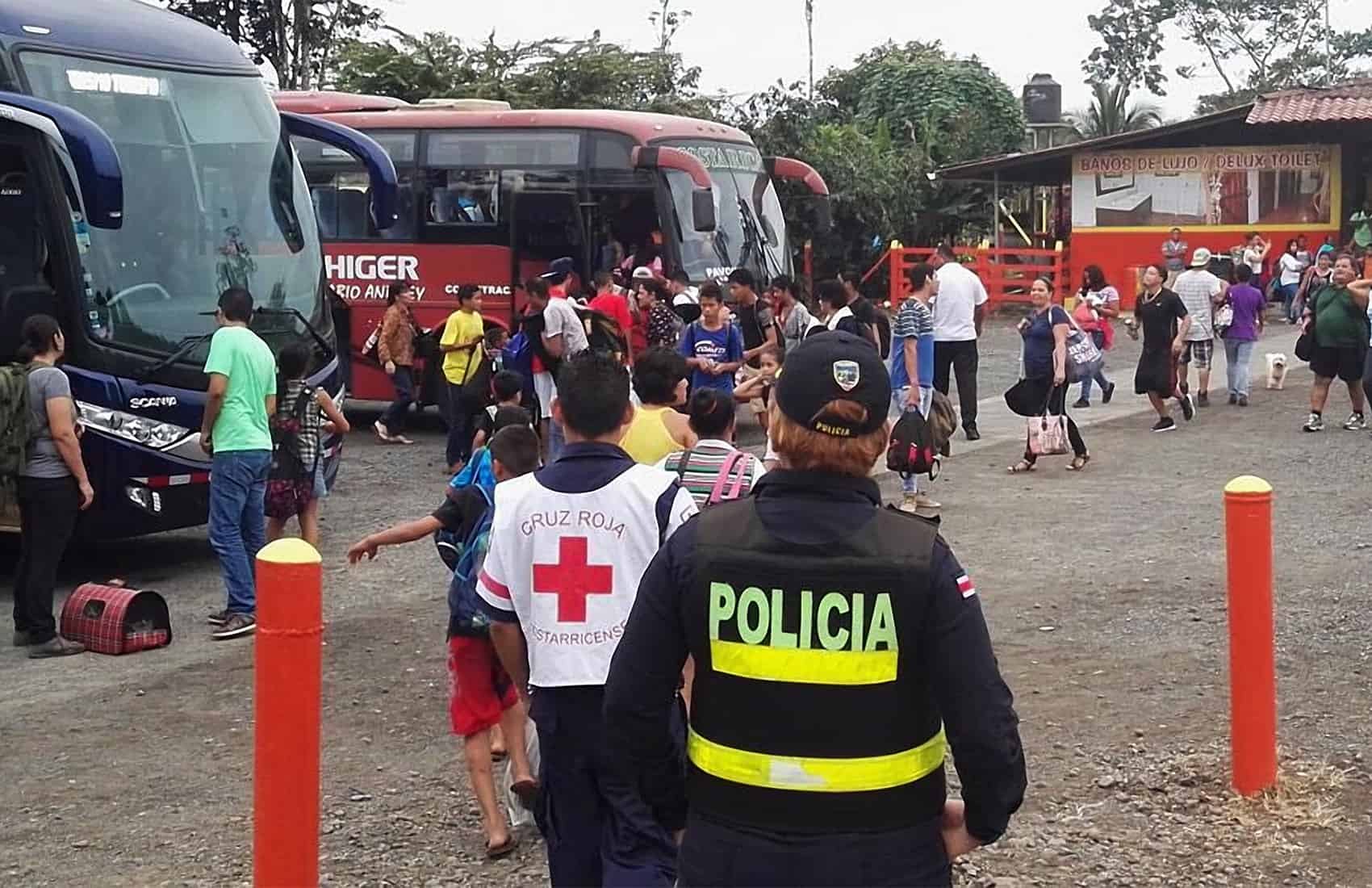Costa Rican government officials expect the most severe effects of Hurricane Otto to hit the country on Wednesday night and Thursday morning, President Luis Guillermo Solís said at a press conference on Tuesday evening.
Solís said the hurricane is “highly dangerous” and will increase flooding and landslides in several areas.
“We call on the population to avoid being outside in all the communities under alert as we expect winds up to 120 kilometers per hour (75 mph) to hit during those hours,” he said.
National Meteorological Institute (IMN) Director Juan Carlos Fallas said Ticos are not used to dealing with winds such as those expected to hit most of the country starting Wednesday evening.
“Gusts on Wednesday will begin at about 40 kilometers per hour (25 mph), and then will begin rising to about 120 km/h as the hurricane approaches,” he said.
Track Hurricane Otto’s path in real time:
Evacuation
President Solís on Tuesday morning ordered the evacuation of about 4,000 residents of communities in the Northern and the Caribbean regions of the country.
Solís said at the press conference that he had authorized the Red Cross to start collecting donations to assist people affected by Otto.
Red Cross spokesman Luis Guzmán said that all Red Cross offices across the country will collect donations but only will receive bottled water and canned food.
At 7 p.m. CNE had reports of floods, landslides and other damages in more than 150 communities across the country. Some 1,160 people had been relocated to shelters, the agency reported.
National Police Director Juan José Andrade said that evacuation operations are being carried out using 18 vessels, 8 airplanes and 14 buses, as well as boats and vehicles facilitated by local entrepreneurs and residents.
Andrade said that if necessary they would use force people to leave their homes.
“We can’t waste time. We need to move as fast as we can and evacuation is mandatory. We will not negotiate or argue with anyone,” he said.
Andrade noted that National Police officers are also evacuating and taking to shelters a large number of animals and pets they are finding during their evacuation missions.
¡NO LOS OLVIDAMOS! Aunque ellos no hablan, necesitan nuestra ayuda y los estamos evacuando a un lugar seguro. #EmergenciaOtto #HonorDeServir pic.twitter.com/VuiB8WYJa5
— Juan Jose Andrade M. (@j_j_andrade) November 23, 2016
Tourism
The Costa Rica Tourism Board (ICT), the National Tourism Chamber of and the Costa Rican Chamber of Hotels on Tuesday called on tourism entrepreneurs in areas within the Red Alert to abide by CNE’s recommendations and evacuation orders.
ICT General Manager Alberto López said in a public statement that they had reports that all tourists were already evacuated in the areas of Tortuguero, Parismina and Colorado in the Northern Caribbean region.
López also said they were moving forward with the evacuation of tourists at hotels and other lodging businesses in the Center and Southern Caribbean areas, and that they were expected to finish early on Wednesday.
Red Alert
As of Tuesday evening a total of 18 cantons were under Red —Emergency— Alert, while the rest of the country is under a Yellow —Preventive— Alert.
This is the full list of cantons and communities by province under Red Alert:
In Limón: Delta Costa Rica, Calero, Las Barras, Tortuguero, Parismina, Boca Pacuare, Pococí, Matina, Guácimo, Siquirres.
In Alajuela: Toro Amarillo, Río Cuarto, Los Chiles, Upala, San Carlos, Guatuso.
In Heredia: Sarapiqui.
In Guanacaste: La Cruz.







